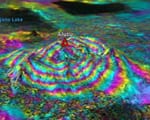One hundred percent of STEMPREP project students who finish the program attend college and 83 percent go on to graduate school to become physicians, pharmacists, dentists, researchers or engineers.
The U.S. Department of Defense recently awarded the STEMPREP Project at Southern Methodist University a $2.6 million grant to support its goal of increasing the number of minorities in STEM fields. STEMPREP recruits bright, science-minded minority middle school students for the two-summer classroom phase of the STEMPREP project, then provides high school students with summer opportunities at research labs.
The program, based at SMU’s Annette Caldwell Simmons School of Education and Human Development, boasts an impressive success rate. One hundred percent of STEMPREP project students who finish the program attend college and 83 percent go on to graduate school to become physicians, pharmacists, dentists, researchers or engineers.
“Being in this program empowers students,” says Charles Knibb, STEMPREP director of academic affairs, an SMU research professor and a former surgeon.
According to a 2013 report from the U.S. Census Bureau, African Americans make up 11 percent of the U.S. workforce but only 6 percent of STEM workers. Hispanics make up 15 percent of the U.S. workforce, but just 7 percent of the STEM workforce.
STEMPREP students intern at laboratories throughout the United States
Joy Brown-Bryant plans to change those statistics – she would like to be U.S. surgeon general one day. But first, the 14-year-old from Oakland, Calif. wants to help reconstruct the faces of military burn victims as a plastic surgeon. Brown-Bryant is well on her way to achieving her goal.
She is one of 100 seventh- and eighth-grade STEMPREP students living on the SMU campus for six weeks of college-level biology, chemistry, statistics and research writing classes, daily biochemistry labs, and development of a final in-depth research presentation on a disease.
After two summers at SMU, students in grades 9 through 12 are ready to work as summer research interns at laboratories at universities, the National Institutes of Health and private industry, with careful mentoring all along the way. This summer, STEMPREP high school and college students are interning in research laboratories in Bethesda, Philadelphia, Vancouver and Dallas.
Moses Williams, executive director, founded the program in 1990 when he was admissions director for Temple University School of Medicine in Philadelphia.
“As a gatekeeper, I realized there were not a lot of minorities being considered,” he says. “I wanted to change that.” He compares the program to training young athletes: Identify talent early and then nurture it through practice and coaching.
STEMPREP students also learn the nonacademic lessons of college life at SMU – sharing a room in a residence hall, selecting their own meals in the campus dining hall and washing their own clothes. “I’m an only child; I’ve always had my own room,” says Stephen Isabell, a seventh-grader from Olney, Md. “Living in a dorm is a lot different than home, but it’s worth it. I’m becoming more independent.”
STEMPREP students return as counselors to other young scientists
At SMU, 12 STEMPREP high school seniors have come full circle, returning to the university as counselors to the newest crop of young scientists.
“Being part of STEMPREP confirmed my decision to become a doctor,” says 18-year-old STEMPREP counselor Feaven Berhe. “In ninth grade when I started working in a research lab studying chemotherapy for breast cancer, I knew I wanted to pursue a medical career.”
Berhe assisted with breast cancer nanochemotherapy research for two summers at Thomas Jefferson University in Philadelphia and last summer conducted a behavioral study on rats at the National Institute on Drug Abuse. This summer she is assisting with pancreatic cancer research at the University of Texas Southwestern Medical School.
At 10 p.m. curfew each evening, Berhe checks on the seventh- and eighth-grade students in the residence hall. “It makes me emotional to talk with them,” she says. “They are beginning to realize that they are part of something that is life-changing.” — Nancy George
SMU is a nationally ranked private university in Dallas founded 100 years ago. Today, SMU enrolls nearly 11,000 students who benefit from the academic opportunities and international reach of seven degree-granting schools. For more information see www.smu.edu.
The Annette Caldwell Simmons School of Education and Human Development at SMU reflects the University’s vision of serving the most important educational needs of the city, region and nation, graduating students for successful careers in a variety of fields and providing educational opportunities beyond traditional degree programs. The school is committed to rigorous, research-driven programs that promote evidence-based, effective practices in education and human development.
SMU has an uplink facility located on campus for live TV, radio, or online interviews. To speak with an SMU expert or book an SMU guest in the studio, call SMU News & Communications at 214-768-7650.


 Low IQ students learn to read at 1st-grade level after persistent, intensive instruction
Low IQ students learn to read at 1st-grade level after persistent, intensive instruction Richest marine reptile fossil bed along Africa’s South Atlantic coast is dated at 71.5 mya
Richest marine reptile fossil bed along Africa’s South Atlantic coast is dated at 71.5 mya Satellite view of volcanoes finds the link between ground deformation and eruption
Satellite view of volcanoes finds the link between ground deformation and eruption